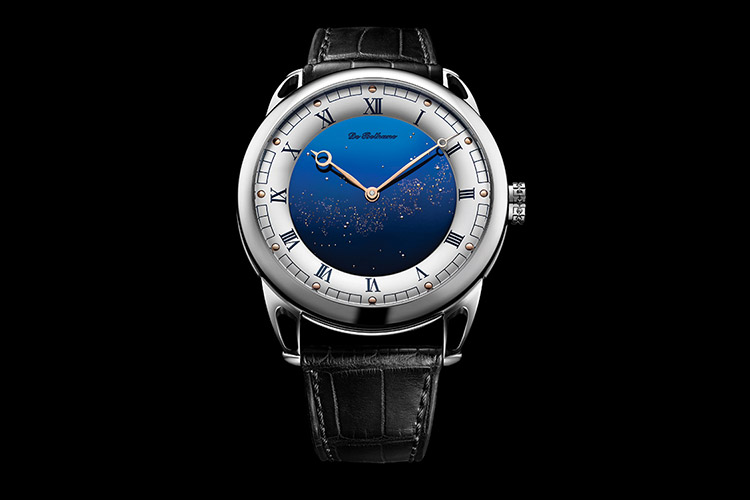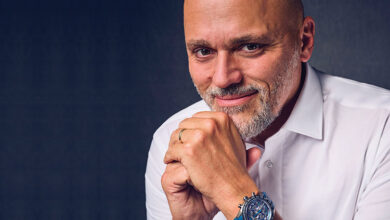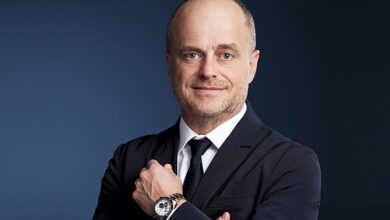
“Day & Night” magazine sat down with Pierre Jacques – CEO of haute horlogerie marque De Bethune – and discussed a number of developments in the brand, not least of which is its new partner WatchBox. Iconic watches and colours of the maison also feature…
Can you tell us about WatchBox – your announcement of the partnership and its details?
The announcement came about because WatchBox acquired a substantial share of De Bethune. We decided to find a strong partner to run and develop the company; it is like a wedding. We find a nice fiancée that we want to go on an adventurous journey together. It was not really a need, as De Bethune was doing well especially after the COVID pandemic as business has been amazing.
But for the mid- and long-term strategy, it was very useful to find a partner who knows the business and can really add value. WatchBox is very strong in the pre-owned watches market, and for De Bethune, it was important to have a partner who understands the specifics of all brands and the pre-owned market. Because, the value of a new watch and the success of the watch company depend on the pre-owned market; they are linked. The mid- and long-term vision is very strategic and WatchBox is an amazing platform.
To say that they have a complete list of watch lovers and collectors on their database wouldn’t be wrong; the business is changing and we have to move with times. We also have a very strong network of retailers that we have collaborated with since the beginning; we have the best retailers around the world. This is a second channel that is good to explore; because as De Bethune is the vision of watchmaking art in the 21st century, we also have to use the distribution channel of the 21st century.
The WatchBox platform is completely aligned to our vision and they are the number one in terms of size and reach. They will not change anything in the daily business of the brand because the watchmaker, creator and genius is still Denis Flageollet. Not only are they letting us be with our vision of where we are headed, they are also amazing partners because they are strong. They are leaders in the field and are strong in terms of creativity and quality. So, I think, it is a wedding for the best.
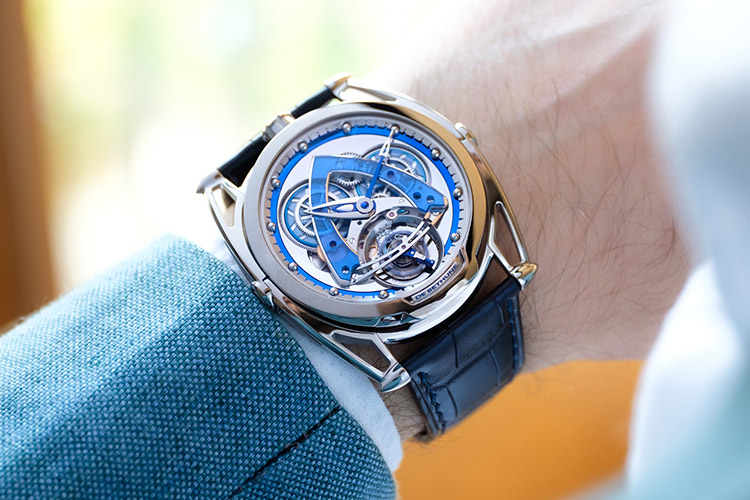
You described WatchBox as ‘partners’; how exactly are they partners of De Bethune?
They are our partners because they hold a certain percentage of our shares. They are partners because we can exchange information and because we decided to go for a journey with them.
In an earlier interview, you had said that you would be happy if De Bethune could produce around 200-250 watches a year; how close are you to that number?
I can now tell you that by the end of 2021, production would have reached around 200 pieces. I think it is a fine number. If we have to grow, we will continue to grow but organically. Even if we have to reach 220 or 230 pieces, we will have to hire a watchmaker, we will have to train many people to reach our level of quality. We cannot increase production like this and deliver quality watches.
In 2017, we increased production from 30 pieces to 100 – a significant three-fold increase. The following two years, we stabilised at 150, and this year, we will jump from 150 to 200 pieces. In a bit more of time, we may increase from 200 to 250 – we will grow slowly and organically.
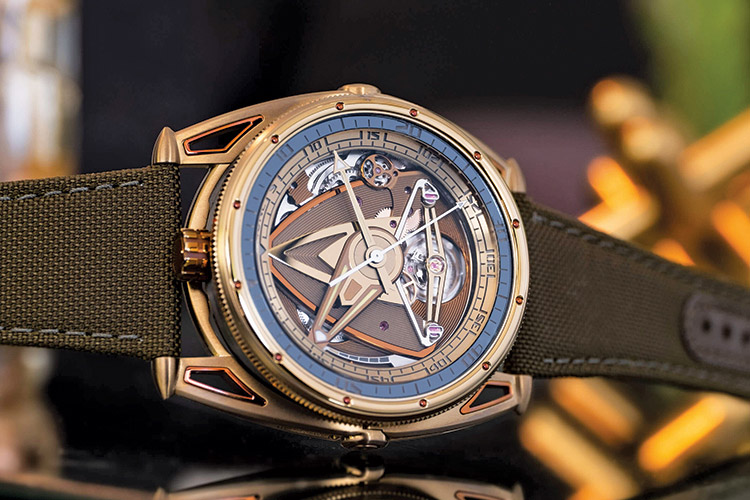
DB28 is an iconic watch for De Bethune; what other lines are doing very well?
Now, it is the Starry Varius; the DB25 Starry Varius with a 42 mm case is doing amazingly well. The new Starry Varius GMT – a new line – especially is doing very well, and of course, the DB27 is also popular. But it is the Starry Varius that is the bestseller.
Recently you released the thin version of the DB28; why did you do it when the DB28 is itself a fairly thin watch?
I will not say it is because of the trend, because we do not follow trends. The DB28 is so light that you even forget you are wearing it, but we wanted to make it more comfortable – slim, light, very comfortable, almost like a second skin on the wrist that is very elegant. It is an evolution of the DB28 itself – every DB28 is an evolution of the previous one.
When I explored all the pre-owned watch sites, there are very few De Bethune watches available; why?
During the past 18 months – I don’t like using the word ‘pandemic’ – people started realising that all De Bethunes are unique and started buying pieces available on the secondary market, especially because we are all sold out of De Bethune watches for the next two years. So, if you wanted a De Bethune watch now, the only place you can acquire it is in the secondary market. That is why the market is a little bit dry for De Bethune, which is actually a good problem. If I remember right, there were more than 150 watches available in the secondary market two years ago, and now it is less than 10 pieces. I would say it is a good problem; good for the brand as this means that De Bethune has become a strong brand.
De Bethune plunged into Diver watches a couple of years ago; how has that line been performing?
That has been going extremely well; last year, we launched a limited edition of the DB28GS Yellow Submarine, which was sold out in a couple of months.
De Bethune has always been very particular about colours, and you have introduced iconic ones such as the De Bethune Blue and the Retro Yellow Gold. Can you tell us about them?
We love metallurgy and working on metals; we have the blue, the purple and the yellow. We could perhaps one day have green; you know the spectrum of colours is quite big. The yellow we use is a very retro yellow, has an Art Deco flavour to it and is an interesting colour.
What are the brand’s plans for expansion in the next four-five years?
In the next five years, we could be reaching around 400 pieces, but we don’t want to go too fast. It depends on the market. We also need time to train the right people to make the right product. We also believe in being quiet and being happy for what we have today. Yes, we will grow but will still be organic.
